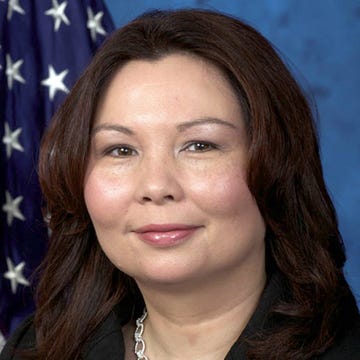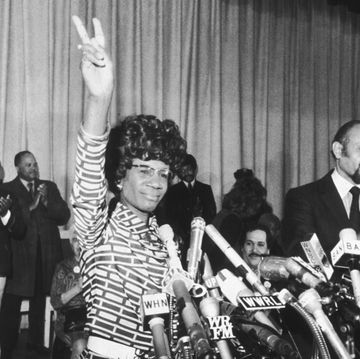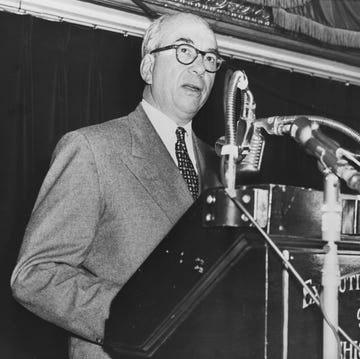(1758-1794)
Who Was Maximilien de Robespierre?
Maximilien de Robespierre was a radical Jacobin leader and one of the principal figures in the French Revolution. In the latter months of 1793, he came to dominate the Committee of Public Safety, the principal organ of the Revolutionary government during the Reign of Terror, but in 1794 he was overthrown and guillotined.
Early Life
Maximilien Marie Isidore de Robespierre was born in Arras, France, on May 6, 1758, the oldest of four children. His mother died when he was 6 years old, and his father left the family soon after. The children were raised by their maternal grandparents. Young Maximilien was educated in Paris, graduating from the Lycée Louis-le-Grand and earning a law degree in 1781. He practiced law in Arras, which provided him with a comfortable income.
Entering Public Service
Robespierre soon took on a public role, calling for political change in the French monarchy. He became a devotee of social philosopher Jean-Jacques Rousseau, intrigued by the idea of a virtuous man who stands alone accompanied only by his conscience. He gained a reputation for defending the poorest of society and earned the nickname "the incorruptible" for his adherence to strict moral values.
At age 30, Robespierre was elected to the Estates General of the French legislature. He became increasingly popular with the people for his attacks on the French monarchy and his advocacy for democratic reforms. He also opposed the death penalty and slavery. Some of his colleagues saw his refusal to compromise and his rigid stand against all authority as extreme and impractical. After a time he left the legislature to push his agenda outside of government.
Revolutionary or Madman?
In April 1789, Robespierre was elected president of the powerful Jacobin political faction. A year later, he participated in writing the Declaration of the Rights of Man and Citizen, the foundation of the French constitution. When the people of Paris rose up against King Louis XVI in August 1792, Robespierre was elected to head the Paris delegation to the new National Convention. In December of that year, he successfully argued for the execution of the king and continued to encourage the crowds to rise up against the aristocracy.
On July 27, 1793, Robespierre was elected to the Committee of Public Safety, formed to oversee the government with virtual dictatorial control. Faced with pressures both from the outside and from within, the Revolutionary government instituted the Reign of Terror in September. In the next 11 months, 300,000 suspected enemies of the Revolution were arrested and more than 17,000 were executed, most by guillotine. In the orgy of bloodshed, Robespierre was able to eliminate many of his political opponents.
Seemingly intoxicated with the power over life and death, Robespierre called for more purges and executions. By the summer of 1794, many in the Revolutionary government began to question his motives, as the country was no longer threatened by outside enemies. An awkward coalition of moderates and revolutionaries formed to oppose Robespierre and his followers.
Death
On July 27, 1794, Robespierre and many of his allies were arrested and taken to prison. He was able to escape with the aid of a sympathetic jailer and hid in the Hôtel de Ville (City Hall) in Paris. When he received word that the National Convention had declared him an outlaw, he tried to commit suicide but succeeded only in wounding his jaw. Shortly after, troops from the National Convention stormed the building and seized and arrested Robespierre and his followers. The next day, he and 21 of his allies were executed at the guillotine.
Ironic Aftermath
After the coup, the Committee of Public Safety lost its credibility and the French Revolution became distinctly less radical. France saw the return of bourgeois values, corruption and further military failure. In 1799, a military coup led by Napoleon Bonaparte overthrew the Directory and established him as the first consul, with dictatorial powers. In 1804, Napoleon proclaimed himself emperor of France.
QUICK FACTS
- Name: Maximilien de Robespierre
- Birth Year: 1758
- Birth date: May 6, 1758
- Birth City: Arras
- Birth Country: France
- Gender: Male
- Best Known For: Maximilien de Robespierre was an official during the French Revolution and one of the principal architects of the Reign of Terror.
- Industries
- World Politics
- War and Militaries
- Astrological Sign: Taurus
- Schools
- Lycée Louis-le-Grand
- Nacionalities
- French
- Death Year: 1794
- Death date: July 28, 1794
- Death City: Paris
- Death Country: France
Fact Check
We strive for accuracy and fairness.If you see something that doesn't look right,contact us!
CITATION INFORMATION
- Article Title: Maximilien de Robespierre Biography
- Author: Biography.com Editors
- Website Name: The Biography.com website
- Url: https://www.biography.com/political-figures/maximilien-de-robespierre
- Access Date:
- Publisher: A&E; Television Networks
- Last Updated: October 28, 2021
- Original Published Date: April 2, 2014
QUOTES
- The secret of freedom lies in educating people, whereas the secret of tyranny is in keeping them ignorant.
- To punish the oppressors of humanity is clemency; to forgive them is cruelty.
- The king must die so that the country can live.













